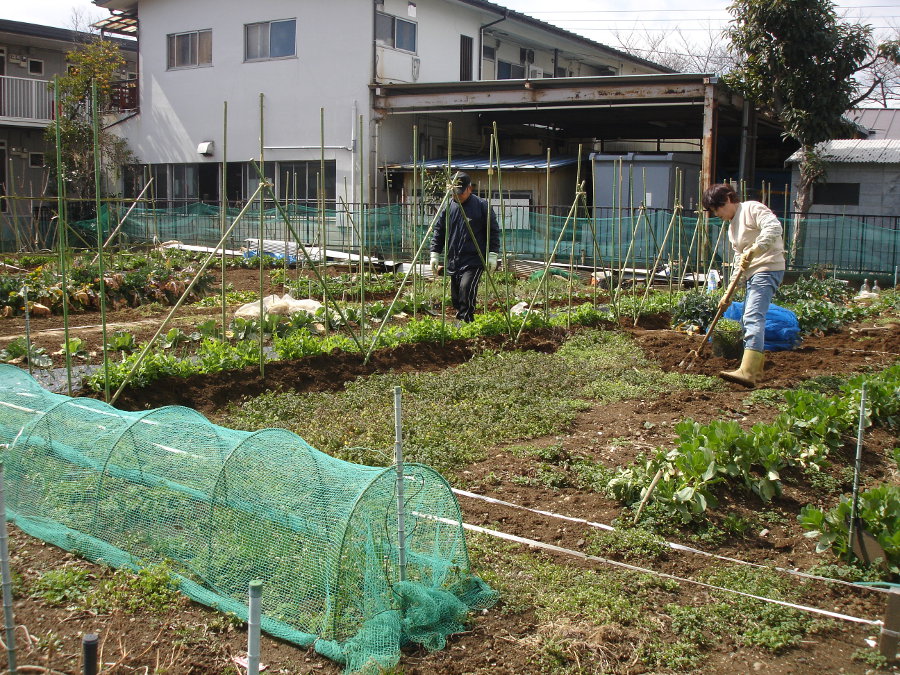May 18, 2012


TOKYO — Tokyo may seem like a city running as efficiently as a clock with its gleaming skyscrapers, punctual subway, and well-dressed people constantly in a hurry. Go just outside the city however, and you will see people going back to the agrarian way. There are many lovingly-tended community vegetable gardens and allotment gardens in the Tokyo suburbs. (Photo by Roland Oehme)
[nggallery id=207 template=carousel images=8][imagebrowser id=207]
By Roland Oehme May 18, 2012
TOKYO — Tokyo may seem like a technology-obsessed city running as efficiently as a clock with its gleaming skyscrapers, punctual subway system, and well-dressed people who are constantly in a hurry. Go just outside the city however, and you will see a more agrarian picture. There are many lovingly-tended community vegetable gardens and allotment gardens in the Tokyo suburbs. While on a recent visit to Saitama, a city about one hour north of Tokyo, I saw these community gardens up close.
Gardens are scattered all over Saitama, usually within walking or biking distance of their caretakers. I did not see any parking lots near the gardens. There were also larger vegetable gardens located along the river park that people walked, biked, or drove to. Here they grew rice in addition to veggies. Even in mid-March, there were many vegetable crops sprouting including winter-hardy plants like onions, peas, and mustard, as well as plants from the cabbage family like brocolli, kale, and collard.
Since the tsunami and nuclear disaster at Fukushima last year, many people in Japan are concerned about eating radiation-free produce. Many grocery stores in Japan will state where their produce is grown. Organic food stores will even have photos and descriptions of the farmers who grew the produce. Japanese people prefer to buy produce grown in the western part of Japan, and shun produce from the disaster area. Strangely enough, radiation awareness has not fully translated into widespread demand for chemical-free, organic produce, although interest in sustainable agriculture is growing.
There are also German-style “kleingaerten,” or allotment gardens, in Japan. An allotment garden is a rented parcel where one may grow all kinds of food, including herbaceous vegetables and woody plants like trees, shrubs, and vines. The allotment garden is allowed to have a small building on the property as well. These buildings typically have a small kitchen, bathroom, and combo living room/ dining room/ bedroom. People who rent allotment gardens spend most of their free time at their gardens, and even spend weekends and vacations there. Allotment garden houses could be what gave rise to the recent tiny house movement in the United States, and they definitely exemplify the self-sufficiency promoted by urban homesteading. If everyone on the planet had their own allotment garden and small house, we would be able to feed and house the world’s population sustainably.
Sierra Club Green Home is inspired by Japan’s garden models, and we hope to see some of these ideas taking root worldwide!
For related articles, see: Environmentally Friendly Vacation in Tokyo Urban Farm – A Growing Trend Los Angeles Youth Plant Seeds of Sustainbility and Social Justice
Roland Oehme is a green and healthy living landscape architect and writer. Check out his blogs Green Harmony Design and We Love Raw Food.
© 2012 SCGH, LLC. All rights reserved.
]]>